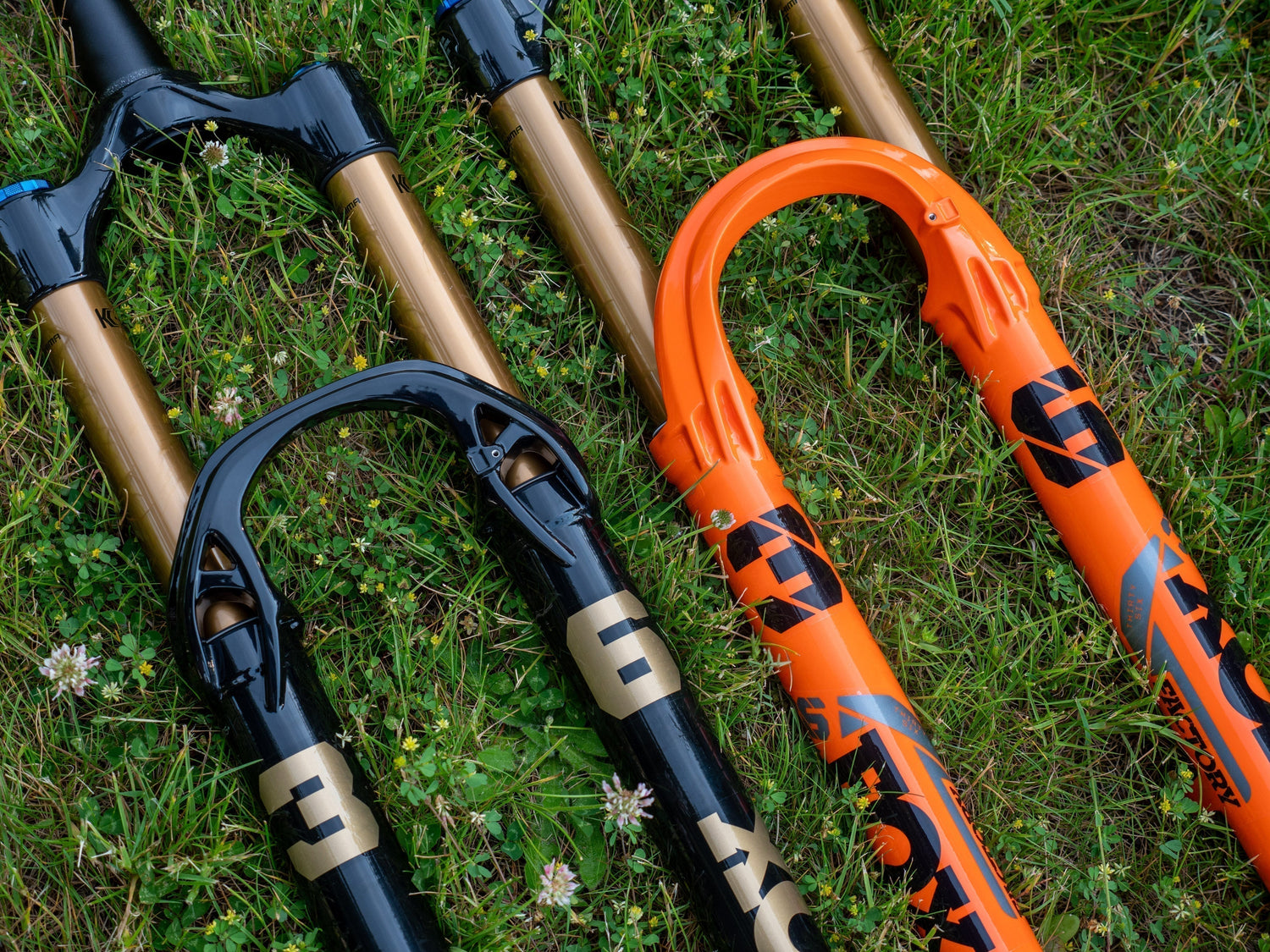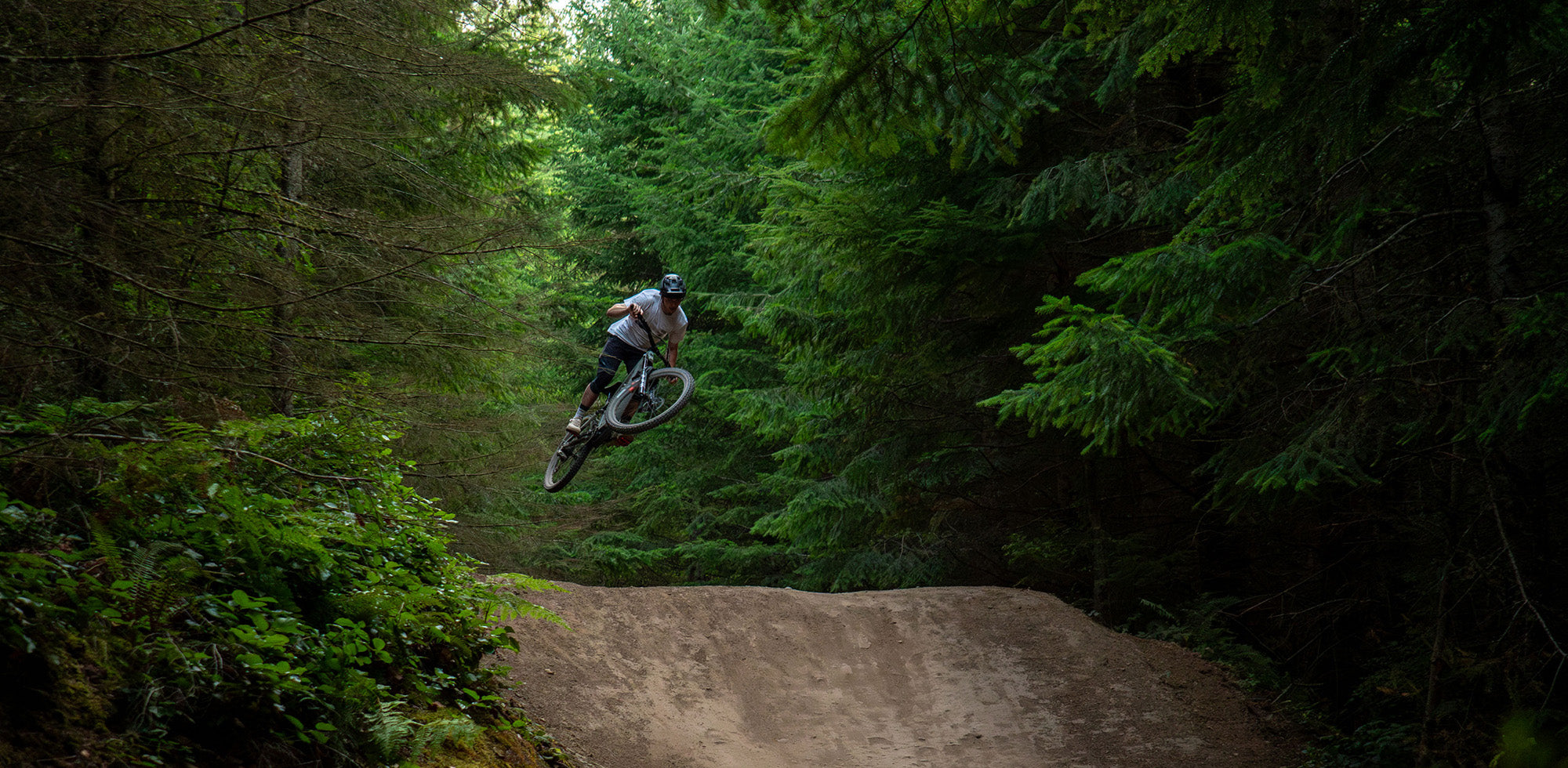With constantly-evolving suspension technology, it’s easy to get overwhelmed by the array of options currently available from Fox. The growing list of numeric and alphabetical abbreviations for dampers and chassis doesn’t help much either. In recent years, Fox has introduced two new fork dampers, the GRIP X and GRIP X2. Not long after, the 2026 fork lineup featured a newly designed chassis. With such a large variety of Factory-level forks, filtering by "Fox/Forks/Factory 36," results in a broader range of options than ever before. Over the past few months, I have been riding both the 2025 Fox 36 GRIP X and the 2026 Fox 36 GRIP X2 to understand the finer differences between these two dampers and recent chassis updates.

The 2025 36 Factory utilizes the older chassis design with its curved arch profile, and is complete with all of the features expected for Factory-level suspension. Upon release, the 2025 Fox 36 was available with either a GRIP X or a GRIP X2 damper. Intrigued by its current price-point and simple range of adjustment, this fork stood out to me enough to warrant a try. If the GRIP X damper can provide close to top-end performance paired with a Factory-level chassis at nearly $800, it may be a high-performing contender that is being widely overlooked by many riders.

New for this year, the latest iteration of the 36 uses the pre-existing GRIP X and GRIP X2 dampers, with a host of refinements and updates throughout the lowers and air spring. Even to a relatively untrained eye, the holes in the redesigned arch are a dead giveaway that Fox has majorly redesigned the chassis for this model year. Generatively designed for the optimal balance of strength and weight savings, the new 36 arch wraps around the lowers for a 20% increase in torsional stiffness.
The redesigned FLOAT air spring has been decoupled from the stanchion, allowing it to move within the stanchion as the fork bends slightly during compressions. Previously, under large or repetitive impacts, this slight “bending” could cause the air spring to bind inside the fork. The new design enables the piston to move freely, eliminating any binding effect as the fork cycles through its full travel in rough terrain. Generally, this new air shaft should provide a smoother overall action.
An additional 30mm of bushing overlap significantly reduces friction and increases fore-aft stiffness, delivering a more stable, controlled feel, especially at high speeds. New inboard bypass channels aim to improve small bump compliance and reduce wear by moving out of the main load path, further refining ride quality. Together, these updates are intended to make this the most capable and comfortable iteration of the Fox 36 yet.

Damper Comparison
In 2024, Fox released the GRIP X and GRIP X2 dampers; the GRIP X took the place of the outgoing FIT 4 damper, while the GRIP X2 was a continuation of the top-end GRIP 2 damper. The GRIP X damper is marketed for all-mountain use and offers a more simplistic 3-adjustment interface. The HSR is factory set with 17 clicks of LSR, 16 clicks of LSC, and 15 clicks of HSC. After the final click of the HSC, a 170-degree sweep is available that closes off both compression circuits, providing a supportive pedaling platform.

Used widely among Fox athletes, the previous GRIP 2 damper is synonymous with Kashima coating and World Cup podiums. The GRIP X2 offers the utmost descending performance and the broadest range of tuning with eight clicks of HSC, 16 clicks of LSC, eight clicks of HSR, and 16 clicks of LSR adjustment.

Setup / Riding Impressions
I tested the 2025 GRIP X 36 and 2026 GRIP X2 36 forks in 160mm lengths aboard my Stumpjumper EVO. My time with these forks coincided with the reluctant yet inevitable transformation from perfect spring dirt to dry, dusty hardpack mixed with ball-bearing marbles.
GRIP X
The GRIP X is about as straightforward as it gets for simplified tuning while still providing a high-end ride quality. The single rebound adjustment removes an element from the equation while the 16 clicks of LSR available provide a notable influence on ride feel throughout its range. My the end of my testing, I had opted for 10 clicks (from closed) for LSR. Both compression adjustments have a similarly pronounced impact on setup. My final settings were 11 clicks of LSC and 13 clicks of HSC.

While readily available, I personally didn’t find myself using the “Firm Mode” of the GRIP X damper much. When used, it provided a more supportive, partially locked-out feel for pedaling. For my typical rides, I preferred the standard compression settings for added compliance on single-track terrain and eliminating any chance of forgetting to undo the firm setting for the descents.

There is one caveat with the GRIP X: the sound. There is no denying the slurping sound the damper emits as it cycles through its travel. Eventually, the noise of the GRIP X damper fades into the background sounds of terrain and tires, but it was pronounced compared to the silent RockShox Ultimate damper I was accustomed to before testing.
GRIP X2
The 2026 Fox Factory Grip X2 was not only a new damper to learn but an entirely new chassis and air shaft. The '26 air shaft requires slightly more PSI, with my air pressure going from 81 PSI for the previous model to 84 PSI. While the structural changes to the chassis are visibly noticeable, the internal changes to the bushings and updated air shaft are most likely to credit for any improved stiffness and ride feel over the previous model year suspension.

Having ridden a GRIP 2 damper in the past, the GRIP X2 was familiar territory, offering the same 4-adjustment compression and rebound adjustments. The internals of the damper have been altered with a larger 24mm base valve and 23 valves (shims) for increased sensitivity and flow, whereas the previous GRIP 2 damper had a 20mm base valve and seven valves (shims). This increased flow in the compression circuit provides increased oil flow, offering riders a broader set up window and more distinguishable compression feel. After some initial bracketing I settled on six clicks of LSR, five clicks of HSR, five clicks of HSC, and 10 clicks of LSC.

On trail, I wasn’t dissatisfied with either fork. I was able to quickly find the setup with the 2025 GRIP X Fox 36, and once I honed in the settings on the GRIP X2, it delivered elite-level performance. The more budget-oriented of the two, I was impressed with the out-of-the-box ride feel of the GRIP X. To demystify the GRIP X damper, it shouldn’t be relegated to “base" level status, while cheaper and less-tuneable, it still offers concise adjustment and a ride feel I would be comfortable having on my daily trail bike.
The GRIP X2 is going to be the ideal platform for riders wanting to extract every ounce of performance from their suspension. I found that the clicks, especially the HSC, had a larger impact than its predecessor, while still offering the user interface and ride quality riders have come to expect from Fox. Generally speaking, the GRIP X provided a more lively and “springy” baseline setup, enticing an active setup, staying high in its travel. The GRIP X2 damper offers a wider and more tunable range of rebound and compression adjustment, with my final settings providing a bit more reactive, “ground-hugging” compliance that tracked terrain exceptionally well.
Comparison / Verdict
In full transparency, I weigh 170lbs and am not a World Cup racer. The '25 chassis wasn’t lacking for any features or ride-feel I’d expect out of a high-end all-mountain fork. The GRIP X damper was extremely user-friendly, and I never felt under-gunned, even in the midst of some questionable rock-riddled lines in Whistler and Pemberton.

The '26 GRIP X2 Fox 36, with its upgraded chassis, did provide the most premium ride feel, but I would be lying if I were to pinpoint the sole cause for this among the differing damper, updated chassis, and all-new air shaft. The higher-end damper and numerous updates culminate in a fork that provides a top-end ride feel and a wide range of adjustability. Although, I’d happily show up to a local enduro race with either fork.
Riders wanting a high-performing fork on a budget should consider a '25 GRIP X 36. While those who want the latest and greatest, along with a wider range of (silent) damper adjustments, should consider the '26 GRIP X2 36. However, Richie Rude would definitely suggest the '26, increased torsional stiffness and all that.




